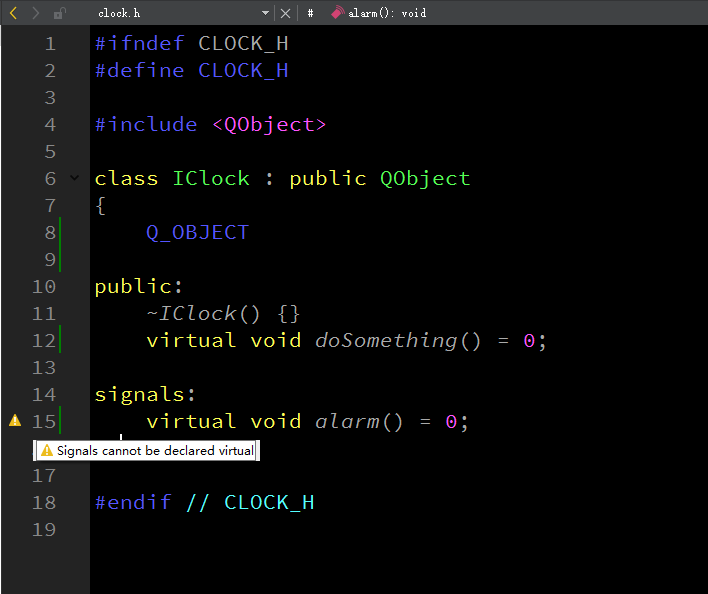Qt Signal Slot Different Class
Introduction
Signals and slots are loosely coupled: A class which emits a signal neither knows nor cares which slots receive the signal. Qt's signals and slots mechanism ensures that if you connect a signal to a slot, the slot will be called with the signal's parameters at the right time. Signals and slots can take any number of arguments of any type. Qt's signals and slots mechanism does not require classes to have knowledge of each other, which makes it much easier to develop highly reusable classes. Since signals and slots are type-safe, type errors are reported as warnings and do not cause crashes to occur. Slots are assigned and overloaded using the decorator QtCore.Slot. Again, to define a signature just pass the types like the QtCore.Signal class. Unlike the Signal class, to overload a function, you don't pass every variation as tuple or list. Instead, you have to define a. This is only done in this case because almost every call to connect would generate a new different type (since the QSlotObject has template parameters wich depend on signature of the signal and the slot). Protected, Public, or Private Signals. Signals were protected in Qt4 and before.
The one thing that confuses the most people in the beginning is the Signal & Slot mechanism of Qt. But it’s actually not that difficult to understand. In general Signals & Slots are used to loosely connect classes. Illustrated by the keyword emit, Signals are used to broadcast a message to all connected Slots. If no Slots are connected, the.
Remember old X-Windows call-back system? Generally it isn't type safe and flexible. There are many problems with them. Qt offers a new event handling system: signal-slot connections. Imagine an alarm clock. When alarm is ringing, a signal is being sent (emit). And you're handling it in a slot.

- Every QObject class may have as many signals and slots as you want
- You can emit signals only from within that class, where the signal is located
- You can connect signal with another signal (make chains of signals);
- Every signal and slot can have unlimited count of connections with other.
- ATTENTION! You can't set default value in slot attributes e.g. void mySlot(int i = 0);
Connection
You can connect signal with this template:
QObject::connect (
);
You have to wrap const char * signal and const char * method into SIGNAL() and SLOT() macros.
Qt Signal Slot Different Classifications
And you also can disconnect signal-slot:
Qt Connect Signal Slot Different Class
QObject::disconnect (
Qt Signals And Slots Tutorial
);
Deeper
Widgets emit signals when events occur. For example, a button will emit a clicked signal when it is clicked. A developer can choose to connect to a signal by creating a function (a slot) and calling the connect() function to relate the signal to the slot. Qt's signals and slots mechanism does not require classes to have knowledge of each other, which makes it much easier to develop highly reusable classes. Since signals and slots are type-safe, type errors are reported as warnings and do not cause crashes to occur.
For example, if a Quit button's clicked() signal is connected to the application's quit() slot, a user's click on Quit makes the application terminate. In code, this is written as

connect(button, SIGNAL (clicked()), qApp, SLOT (quit()));

Connections can be added or removed at any time during the execution of a Qt application, they can be set up so that they are executed when a signal is emitted or queued for later execution, and they can be made between objects in different threads.
The signals and slots mechanism is implemented in standard C++. The implementation uses the C++ preprocessor and moc, the Meta Object Compiler, included with Qt. Code generation is performed automatically by Qt's build system. Developers never have to edit or even look at the generated code.
In addition to handling signals and slots, the Meta Object Compiler supports Qt's translation mechanism, its property system, and its extended runtime type information. It also makes runtime introspection of C++ programs possible in a way that works on all supported platforms.
To make moc compile the meta object classes don't forget to add the Q_OBJECT macro to your class.



